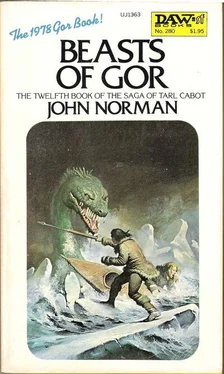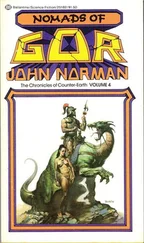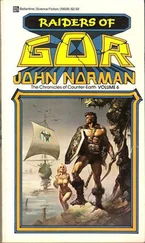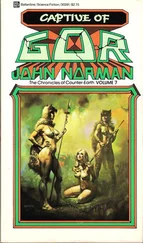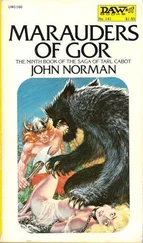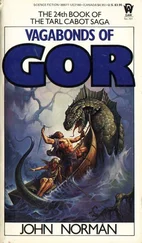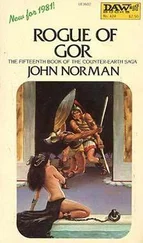“Perhaps the world’s end,” I said, “is on the other side of the wall.”
We did not know where it might be, in the scale of the map mosaic.
“Perhaps,” laughed Samos. “Perhaps.”
He glanced about at the mosaic. For an instant his eye stopped, near its top.
“What is it?” I asked. I had noticed a bit of hesitation in him, a small movement in his shoulder, the sort of thing which suggests that a casual thought. unimportantly troubling, has occurred to someone.
“Nothing,” he said. He had dismissed the thought.
“No,” I said, curious. “What is it?”
He gestured to a guardsman to bring a lamp, for we were far from the light of the bowl of coals now, and of various torches set in the walls.
We walked slowly toward the back of the hall. The guardsman brought him the lamp there.
“As you know,” said Samos, “this house is an intelligence center, in which we receive many reports. Much of what we hear is trivial and unimportant, simply meaningless. Yet we try to remain informed.”
“Naturally,” I said. Who knew when, or if, a pattern might emerge.
“Two items of information we have received seem to us peculiar. We have received them at different times. They are in their nature, unrelated. Yet each is provocative.”
“What are they?” I asked.
“See,” said Samos, crouching down, holding the lamp about a foot above the floor, “here is Kassau, and the Skerry of Vars.”
“Yes,” I said.
“And Torvaldsland, northwards,” he said, “and Ax Glacier.”
“Yes,” I said.
“Have you heard,” he asked, “of the herd of Tancred?”
“No,” I said.
“It is a herd of northern tabuk,” said Samos, “a gigantic herd, one of several. The herd of Tancred winters in the rims of the northern forests south and east of Torvaldsland. In the spring, short-haired and hungry, they emerge from the forests hind migrate northward.” He indicated the map. “They follow this route,” he said, “emerging from the forest here, skirting Torvaldsland here, to the east, and then moving west above Torvaldsland, to the sea. They follow the shore of Thassa north, cross Ax Glacier here, like dark clouds on the ice, then continue to follow the shore north here, until they then turn eastward into the tundra of the polar basin, for their summer grazing. With the coming of winter, long-haired and fat, they return by the same route to the forests. This migration, like others of its kind, occurs annually.”
“Yes?” I said.
“It seems not to have occurred this year,” he said.
I looked at him, puzzled.
“Red hunters of the polar basin, trading for tea and sugar, have reported the failure of the herd to appear.”
“That is puzzling,” I said.
“It is more serious than that,” he said. “It means the perishing of the men of the polar basin, or their near starvation. They depend on the tabuk in the summer for food.”
“Is there anything that can he done?” I asked.
“I think not,” said Samos. “Their winter stores of food, from the ice hunting. will last them for a time. Then they must hunt elsewhere. Perhaps some can live by fishing until the fall, and the return of the black sea sleen.”
The red hunters lived as nomads, dependent on the migrations of various types of animals, in particular the northern tabuk and four varieties of sea sleen. Their fishing and hunting were seasonal, and depended on the animals. Sometimes they managed to secure the northern shark, sometimes even the toothed Hunjer whale or the less common Karl whale, which was a four-fluked, baleen whale. But their life, at best, was a precarious one. Little was known of them. Like many simple, primitive peoples, isolated and remote, they could live or die without being noticed.
“Send a ship north,” I said, “with supplies.”
“The waters north of Ax Glacier are ruthless,” said Samos.
“Send it,” I said.
“Very well,” he said.
“There was something else,” I said.
“It is nothing,” he said.
“Tell me,” I said.
“Here,” he said, moving a bit, “here.” He crouched over the mosaic where it delineated the sea, an arm of Thassa, crescentlike, extending northward and eastward, tangent upon the polar shores. The sea in this area was frozen for more than half the year. Winds and tides broke the ice, crushing and piling it in fantastic shapes, wild, trackless conformations, the sport of a terrible nature at play, the dreaded pack ice of the north.
Samos put the lamp down on the floor. “Here,” he said, pointing. “It lies somewhere here.”
“What?” I asked. Nothing was indicated on the map.
“The mountain that does not move,” he said.
“Most mountains do not move,” I smiled.
“The ice mountains of the polar sea,” he said, “drift eastward.”
“I see,” I said.
Samos referred to an iceberg. Some of these are gigantic, pasangs in width, hundreds of feet high. They break from glaciers, usually in the spring and summer, and drift in Thassa, moving with the currents. The currents generally moved eastward above the polar basin. Gorean has no expression specifically for an iceberg. The same expression is used for both mountain and iceberg. If a reference should he unclear the expression is qualified, as by saying, “ice mountain.” A mountain is a mountain to Goreans, regardless of whether it be formed of soil and stone, or ice. We tend to think of mountains as being land formations. The Gorean tends to think more of them as being objects of a certain sort, rather than objects of a certain sort with a particular location. In a sense, English does, too, for the expression ‘berg’ is simple German for ‘mountain’, and the expression ‘iceberg’, then is a composite word which, literally translated would yield ‘ice mountain’ or ‘mountain of ice’. ‘Berg’, of course, in actual German, would be capitalized, for it is a noun. Interestingly, Goreans, although they do not capitalize all nouns do capitalize many more of them than would be capitalized in, say, English or French. Sometimes context determines capitalization. Languages are diverse and interesting, idiosyncratic and fascinating.
I will generally use the expression ‘iceberg’ for it is easier for me to do so.
“There is here an iceberg,” said Samos, pointing to the map, “which is not following the parsit current.” Samos had said, literally, of course, ‘ice mountain’. The parsit current is the main eastward current above the polar basin. It is called the parsit current for it is followed by several varieties of migrating parsit, a small, narrow, usually striped fish. Sleen, interestingly, come northward with the parsit. their own migrations synchronized with those of the parsit, which forms for them their principal prey. The four main types of sea sleen found in the polar seas are the black sleen, the brown sleen, the tusked sleen and the flat-nosed sleen. There is a time of year for the arrival of each, depending on the waves of the parsit migrations. Not all members of a species of sleen migrate. Also, some winter under the ice, remaining generally dormant, rising every quarter of an Ahn or so to breathe. This is done at breaks in the ice or at gnawed breathing holes.
“An iceberg which does not drift with the current, which does not move with its brothers,” I said.
“Yes,” said Samos.
“It is a thing of myth,” I said.
“I suppose so,” said Samos.
“You grow too tense with your responsibilities, Samos,” I told him. “Obviously such a thing cannot be.”
Samos nodded. He grinned. “You are right,” he said.
“Where did you hear of this?” I asked.
“It was told by a man of the polar basin who had come south to sell skins at the Sardar.”
Читать дальше
